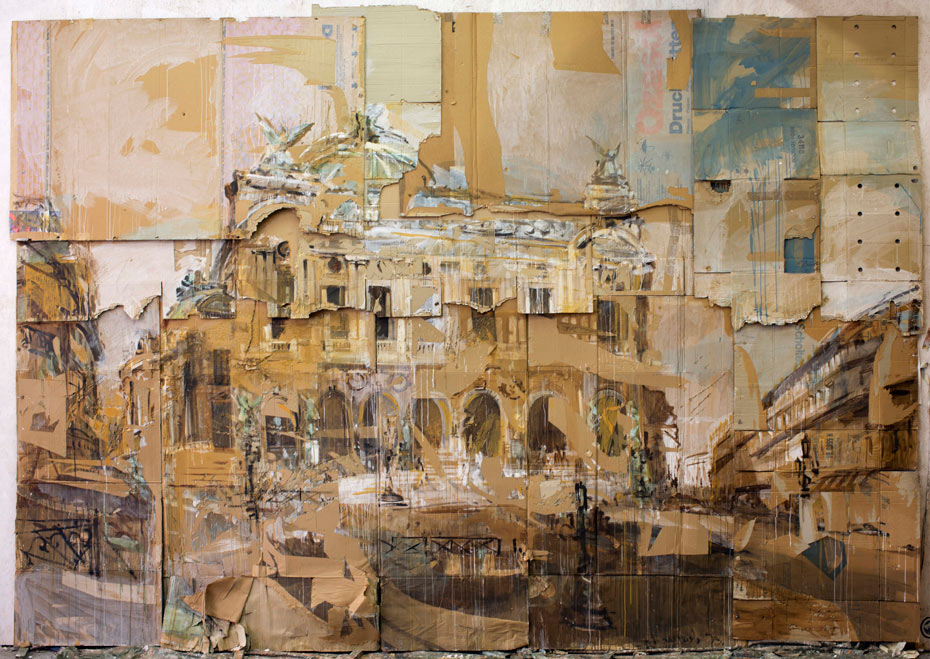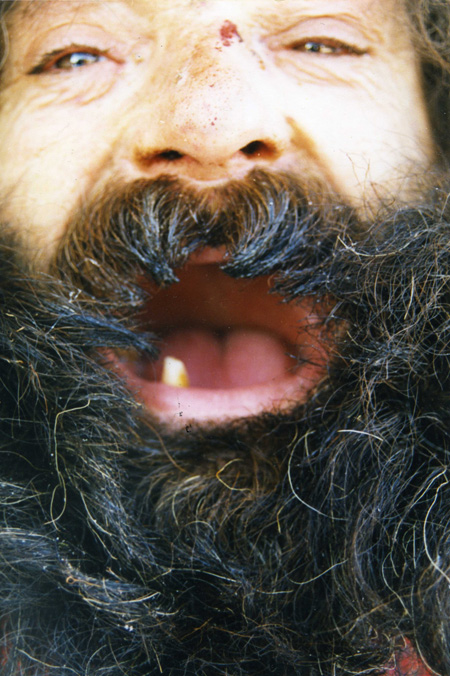William Kherbek explores the Saatchi Gallery’s ambitious exhibition presenting an array of work from contemporary Russian artists

It’s one of those shows you’ll probably be seeing more than once. In fact, you’ll have to, no one can process it in a single visit. Gaiety is the Most Outstanding Feature of The Soviet Union: New Art From Russia at the Saatchi Gallery is, like the country itself, vast, conflicted, and impossible to summarise. There’s a head-spinning diversity to the show in terms of media and aesthetic, but the comparative bigness of the Saatchi relative to other private galleries just about contains it. To say there’s something for everyone is both facile and wrong; in many cases, particularly the searing documentary assault that is the work of the photographer, Boris Mikhailov, there is often a kind of Everything which no one can comprehend and an existentialised Nothing for everyone.
I select Mikhailov as the first artist to discuss partly because he is already quite well known, having had a masterful mini-show at the Tate Modern not long ago, and because his work has a relentlessness that is almost incomprehensible. Utterly resistant to norms of taste, even, in some cases to composition itself, Mikhailov’s portraits of modern Russia are both harrowingly real and bizarrely fantastical. Perhaps he’s the Bulgakov of photography.And whence this realism which is otherworldly but also anything but magical? There’s plenty of naked flesh, most of it undergoing suffering that would likely leave Francis Bacon asking if he could take a few moments to compose himself. There are scars and sores and cysts and every form of rural and urban blight. But, there is also a transcendence to be seen even in Mikhailov’s most cruel and stagey juxtapositions. The ever-present-yet-invisible human detritus of modern Russia, rather as Cornel West describes the Black experience in America, seem to experience life on an entirely other plane of sensation and perception more intense, in its desolation and misery and its moments of ecstatic respite, than anything those not wholly written out of the story society tells itself about itself could hope to understand. That Mikhailov’s works, and necessarily Mikhailov himself, can seem to touch this enhanced, terrible range of experience, even momentarily, is an incredible manifestation of artistic seriousness in and of itself as well as an empathy that would humble even Andrei Rublev. Mikhailov’s are only some of the photographs on show. There are also plenty of quasi-orientalist portraits of elaborately tattooed Russians to keep people who never got over the Russian Criminal Tattoo Encyclopedia busy. About these, the less said the better.
“Mikhailov’s portraits of modern Russia are both harrowingly real and bizarrely fantastical”

But it is not just Mikhailov’s work that makes this a remarkable, intellectually draining and emotionally enveloping show. There are seventeen other artists with work in Gaiety is the Most Outstanding Feature…and there is also another show, Breaking the Ice: Moscow Art 1960s-1980s running concurrently at the Saatchi. There is no way to even begin to touch on all of the riches within, but I would deserve a criminal tattoo if I failed to mention the haunting, unresolvable sculptures of Nika Neelova. They exist in a strange netherspace between musical instruments and farm implements. Gosha Ostretsov’s wild constructions and sculptures have so much vibrancy and verve that you kind of wish they’d been around during the Cold War. Brezhnev and Nixon might have seen them, tripped acid together and ended animosities with a jointly sponsored peace concert starring Rostropovich and The Stooges.
Then, there is a room of paintings by Valery Koshlyakov which would be rather ordinary urban landscapes evocative of vintage Richter if they weren’t on structurally unsound fragments of cardboard. The pieces have a beautiful ruinousness about them, and astutely engage about a dozen different art movements at once. At times, perhaps the support upstages the paint, but there’s enough in the painting of the High-rise on Raushskaya Embankment to keep your eyes busy for days.
Gaiety is the Most Outstanding Feature of the Soviet Union runs until 5 May at Saatchi Gallery, Duke of York’s HQ, King’s Road, SW3




